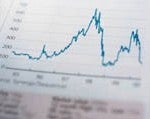Look at a graph of the Dow Jones Industrial Average (DJIA) over the last 10 years or so, and you’ll see an odd symmetry – today’s levels are about the same as they were in the 2000-2001 era. Adjust for inflation and the difference is even starker: The DJIA would have to be around 15,000-16,000 today simply to be equivalent to the DJIA level of about 12,000 a decade ago.
For many years it seemed a truism: Stocks outperform other investments “in the long run.” Buy and hold through thick or thin was the watchword — the ticket to eventual financial security. But can you still take that to the bank?
A recent Wall Street Journal story notes that big changes are underway in financial markets. “Investors are abandoning the time-tested ‘stocks for the long run’ optimism that dominated since the late 1980s. Instead, there is a widening belief that the mess left behind by the housing bubble and financial crisis will be a morass to contend with for years.” The article also noted that developed market equities saw wholesale withdrawals of more than $100 billion since June, and that the new consensus sees equity returns in the foreseeable future below the long-term average of 9% to 10%, with prices lingering “at below-average valuations. Conservative strategies aimed at collecting stock dividends, out of favor for decades, are coming back in vogue.”
But Jeremy Siegel, a professor of finance at Wharton, says that relative to other investments, today’s stock market values still present a buying opportunity. “In bear markets, after long periods of poor performance, everyone questions the long-run success of the stock market. This is not surprising at all. Just as a big bull market brings in a more optimistic estimate of how high we will go, bear markets bring out more estimates that markets are in for a poor time over a number of years.”
This has been a tough decade for stocks, but Siegel has pointed out in the past that over the last 30 years, even taking into account the last decade, stocks have outperformed most other alternatives. Knowledge at Wharton asked Siegel a few additional questions on the topic this week.
Knowledge at Wharton: There has been a lot of money withdrawing from equity markets. What do you make of the trend?
Jeremy Siegel: Yes, people are pulling out of developed market stock markets — they pulled out of ETFs (exchange-traded funds) and mutual funds. They always pull out at the trough and surge in at the top. So, this is another indicator: When people start taking a lot out of the market, the market is turning. The last time was in March 2009, and we are 70% above that level. I’m almost happy to see an article like that (The Wall Street Journal piece) because when everyone has become optimistic or pessimistic, then you know you have reached a top or a bottom. It’s exactly the kind of article you see at a turn in the market. The prevailing opinion is always wrong.
Knowledge at Wharton: What about the idea that the economy is at a “new normal” – with low growth ahead for years?
Siegel: I don’t believe in the “new normal.” Yes, we are in a period of low growth. I understand that, but I don’t think it will last more than a year or two. But even if the slowdown lasts two to three years, and even if (returns) go up only 1% or 2% or 3%, or even if the market is flat, these are great values. And if you believe in the “new normal,” what does that mean you should own? See what happened to gold – and commodities have broken down. Stocks are by far the most attractive investment on a valuation basis. Even if there is no growth, stocks are at the cheapest levels they have ever been — only in the 2009 market bottom, the worst bear market in 75 years, did you get cheaper stocks, when everyone thought we would be in a Great Depression.
Knowledge at Wharton: A lot of analysts worry about a double dip recession and what that might mean for stocks.
Siegel: I don’t think there is going to be a double dip, but even if there is one, recessions are temporary. So even if the markets were to decline 25%, there is a lot of downside protection because you would not be buying at the top or at an inflated price.
Knowledge at Wharton: Others point to big worries about what happens in Europe — what that might mean for the world economy and how that might affect stock markets. What is your view?
Siegel: I don’t think there will be a crisis in Europe. But, even if there is some sort of disturbance, the dollar will rise relative to other currencies. It will not cut earnings for U.S. corporations. And we would still have the emerging markets, though perhaps slowed down, growing at 4%, 5% or 6%. China would be at 6% to 8%.




